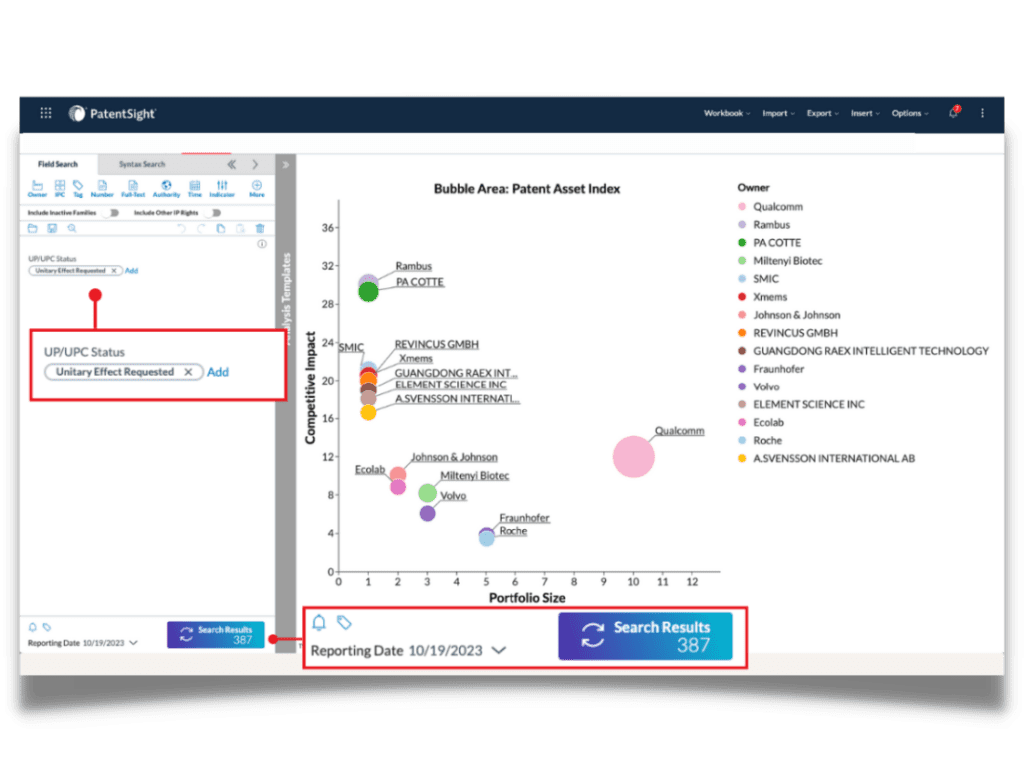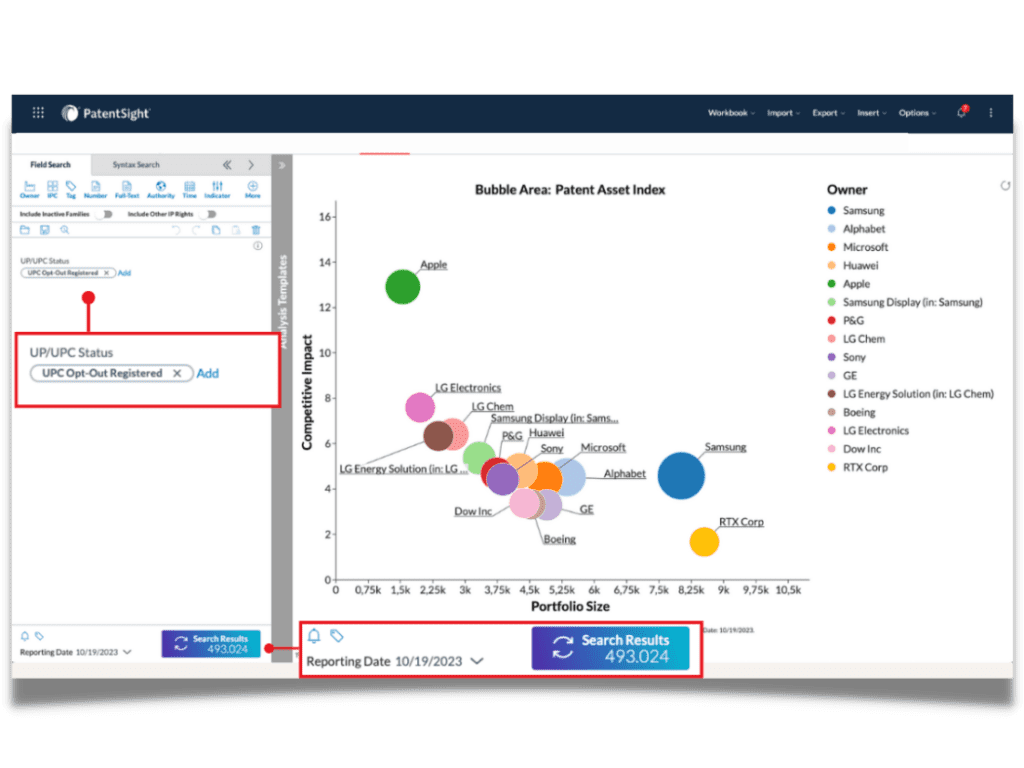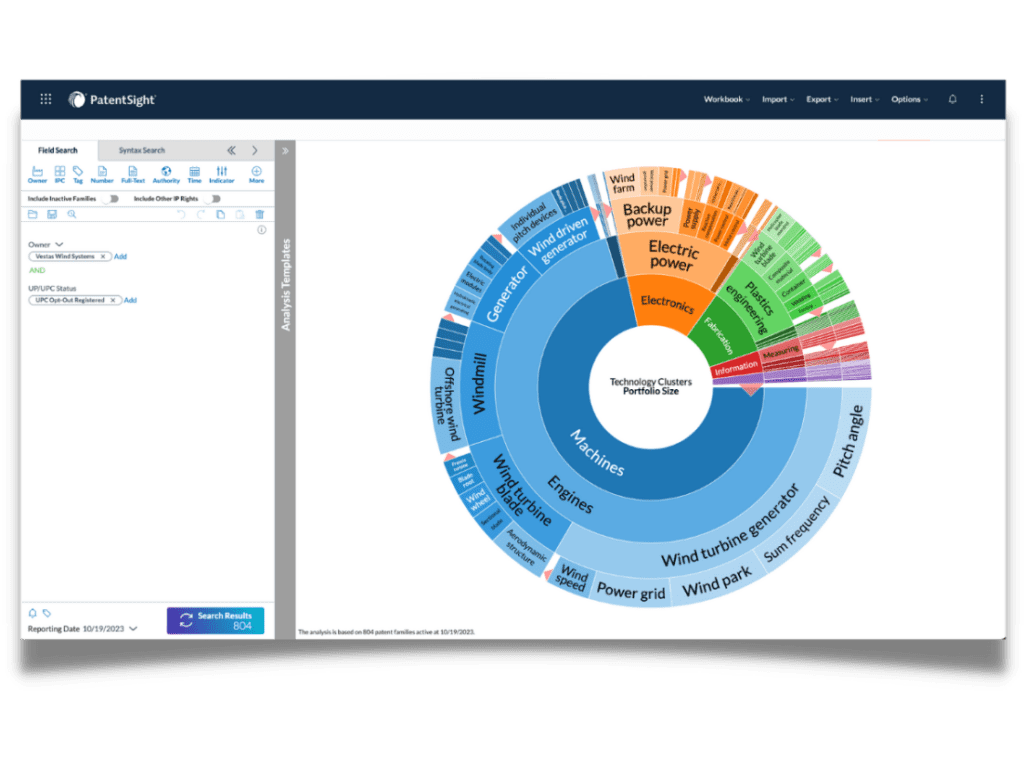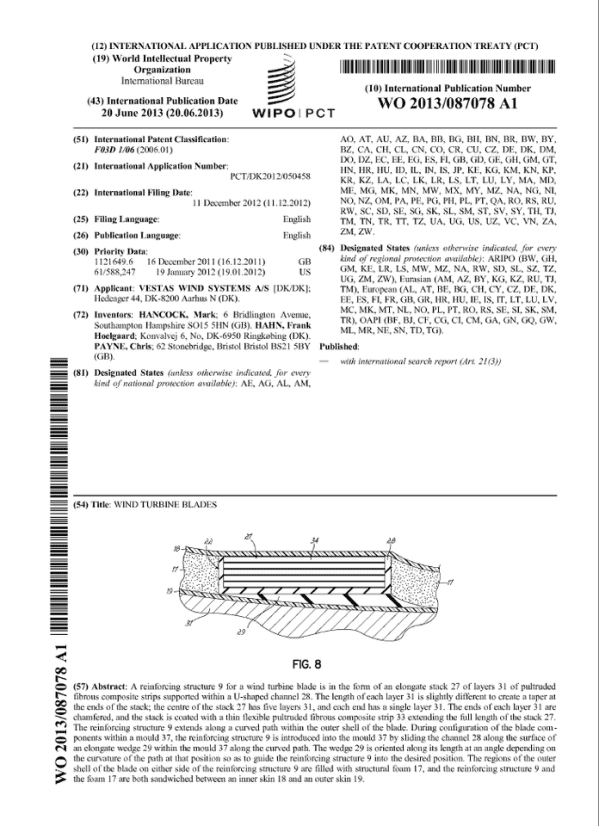Unraveling the Unitary Patent System: A 5-Month Review and What Lies Ahead

The Unitary Patent (UP), often referred to as the “European Patent with unitary effect,” has been making waves in the world of intellectual property rights. This new patent system, introduced to streamline and simplify patent protection in Europe, offers both advantages and potential disadvantages for inventors, businesses, and the legal community.
In this blog, we discuss the intricacies of the Unitary Patent, its benefits, drawbacks, and the role of the Unified Patent Court. We also look at insights pulled from the LexisNexis® PatentSight® IP analytics and intelligence platform to uncover some early UP trends.
The Unitary Patent system: A cost-effective and streamlined approach for IP protection in Europe
The UP system, as described by the European Patent Office, offers a simplified and cost-effective way to protect inventions across multiple countries. Building on the European Patent Convention (EPC), the system introduces the concept of “unitary effect,” which extends patent protection to participating Member States without needing separate validations. This not only simplifies the patenting process but also has the potential to reduce costs. For instance, the annual maintenance cost of a UP is roughly equivalent to renewing patents in just four of the 17 countries. Additionally, the system minimizes validation and translation fees, as English is the primary language used, thereby eliminating the need for local patent office fees and attorney engagement.
Another feature of the UP system is the Unified Patent Court (UPC), which handles post-grant phases and litigation. The UPC claims to resolve trials within a single day and promises to process cases within a year, offering a faster resolution to patent-related disputes. This centralized approach ensures uniform outcomes across all participating countries, making it difficult for potential infringers to evade patent coverage by manufacturing components in different territories. Moreover, the UPC’s efficiency allows for cost-effective enforcement and litigation, further enhancing the system’s appeal.
Opting out of the Unitary Patent system allows you to keep current enforcement and litigation procedures. To revoke a patent, you’ll either need to file a central opposition or take the case to national courts.
As a patent owner, you can choose where to initiate legal action if the infringement occurred in that jurisdiction or the defendant is based there. If someone files a counterclaim for revocation, you can request to move the case to the central division, which may be in a different country. Currently active in 17 countries, the UP system presents a lucrative opportunity for companies to explore new markets, even those with limited trading activity, under a single, unified patent regime.
For more information on the Unitary Patent system, visit the European Patent Office’s official page or read this comprehensive guide by Lexology.
Potential disadvantages of Unitary Patents
While UPs offer several advantages, they also come with potential drawbacks:
1. Limited Protection: Opting out of the UPC can protect rights from being attacked by a single action, deterring competitors from launching challenges across jurisdictions.
2. High Court Fees: Court fees at the UPC can be relatively high compared to national courts, raising concerns about the cost-effectiveness of this system.
3. Complex Jurisdiction: Different competencies of local and regional divisions and the separation of first and second-instance courts in different countries can create complexity in navigating the UPC system.
4. Uncertain Precedent: There have yet to be any cases heard by the UPC, leaving uncertainty about its effectiveness as a jurisdiction.
5. Venue Choices: Patent holders can choose which local or regional division to initiate an action in, but this may lead to cases being transferred to different countries, potentially complicating the legal process.
Using patent data and analytics to understand the Unitary Patent landscape
To understand the impact of this new system on the already complicated landscape of patents, we use advanced patent analytics solutions like LexisNexis® PatentSight®.
As of the Reporting Date – October 19th, 2023, over 380 patent families in the PatentSight global patent database have Unitary Effect Requested as an attribute. Note that PatentSight uses the simple family concept of the European Patent Office. Figure 1 is a chart from PatentSight that shows the Top 15 portfolios according to Patent Asset Index that have requested for unitary patent effect. On the horizontal axis of the chart, you can see the number of patents that have applied for UP effect in the respective portfolios. The size of each bubble measures the overall strength of the unitary patents in each portfolio.
Figure 1: A Quality vs Quantity chart in PatentSight comparing the portfolios of companies that have requested for the Unitary effect.
At the same time, there were over 490,000 patent families that have Unitary Patent Status as “UPC Opt-Out Registered”. Figure 2 plots the Top 15 portfolios from this set of patent families.
Figure 2: A Quality vs Quantity chart in PatentSight comparing the portfolios of companies that have actively opted out of the UPC system.
We used the UP/UPC Status search filter in PatentSight to look at the portfolio of Vestas Wind Systems, a wind turbine manufacturing company, to understand the ramifications of this new patenting system on individual portfolios. As of September 2023, Vestas has 63 patent families that have requested for unitary effect. They also have 804 patent families in their portfolio with a registered opt-out of the UP system; see the screenshot below.
Figure 3: Using the Sunburst Chart in PatentSight to identify the technologies that Vestas Wind Systems have opted out of the unitary effect.
We used the Competitive Impact Decile Chart in PatentSight to dissect the portfolio into deciles based on patent quality, measured by Competitive Impact. The resulting chart, Figure 4, shows clearly that Vestas Wind Systems has 466 patent families that have requested for UPC opt-out in the top 10 decile. By drilling down into this set of patent families, we can identify the most valuable patent family in their portfolio, which is GB2497578.A, which includes patents pertaining to wind turbine blade structures – an impactful invention for the company’s products.
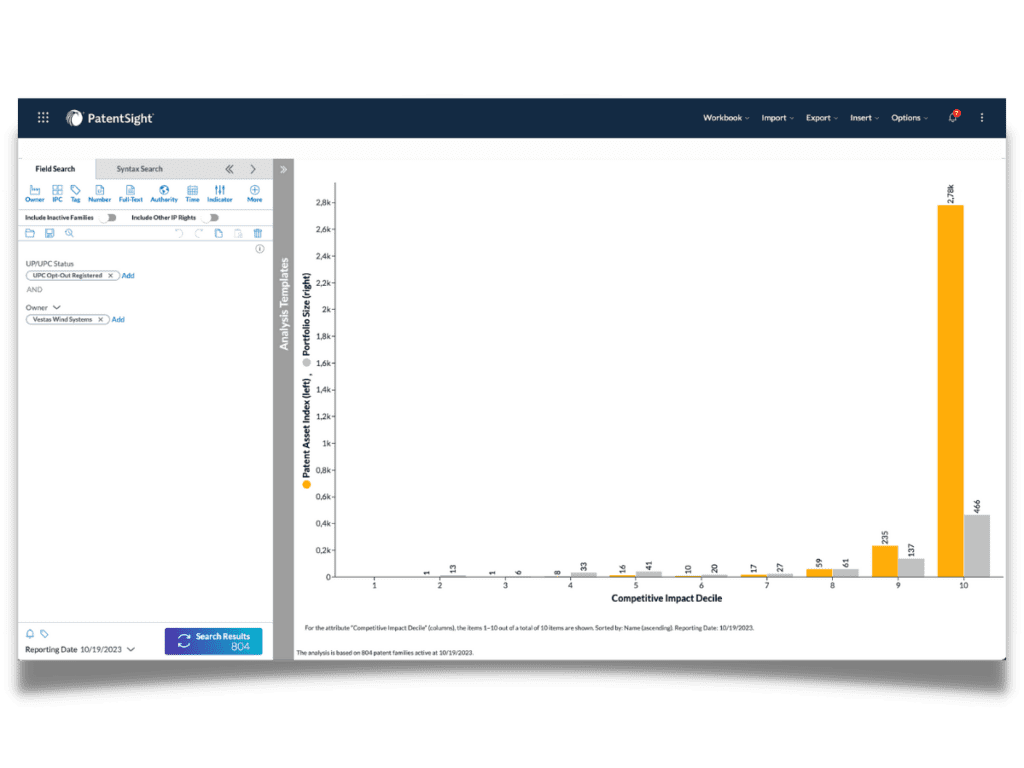
Figure 4: A PatentSight Competitive Impact Decile Chart showing the Vestas Wind portfolio of patents that have requested a UPC opt-out.
Figure 4: GB2497578.A Patent document, in PDF, including images retrieved from PatentSight.
The decision of whether to opt out of the UP system for specific patents in a portfolio depends on how valuable the patent is for the business. The benefit of opting out of the above-identified valuable patent family for Vestas means that a third party cannot bring a revocation action or seek a declaration of non-infringement in respect of that patent in the UPC but only in the national courts of the designations in the patent bundle. If the opt-out is registered during the sunrise period, the risk of a third-party attack in the UPC can be avoided entirely.
The future of innovation management in Europe
The Unitary Patent system could revolutionize European patent protection by simplifying processes and reducing costs. However, potential disadvantages and uncertainties surrounding the Unified Patent Court must be carefully considered. Whether to embrace the Unitary Patent system or opt out is a strategic decision that depends on individual circumstances and objectives.
As mentioned earlier, as of October 2023, there are, in total, close to 500,000 patent families that have UPC Opt-Out registered and over 350 that have applied for Unitary Effect. There is a clear signal that more companies are taking a precautionary approach to this change. The UP system was introduced on June 1st, 2023. So, it is also possible that most companies are still waiting to see the value that a unitary patent can bring. Technology and innovation management teams protecting their inventions in Europe need trusted data and analytics to develop strong patenting strategies that will enable them to prevent their inventions from being attacked. Only advanced patent analytics platforms like PatentSight, which are built on reliable data, can provide the necessary insights for these teams to protect their inventions.
As the Unitary Patent system continues to evolve, staying informed and seeking legal counsel is crucial for navigating these changes effectively.
Is your company filing patents in Europe? Talk to one of our experienced analysts to understand how the Unitary Patent system can be used to your advantage with the right insights.

Get actionable insights for strategic decision making
Want to become more effective at managing your patent portfolio, identify worldwide relevant patents and technology trends, assess the competitive landscape, and find partners and licensing opportunities?

